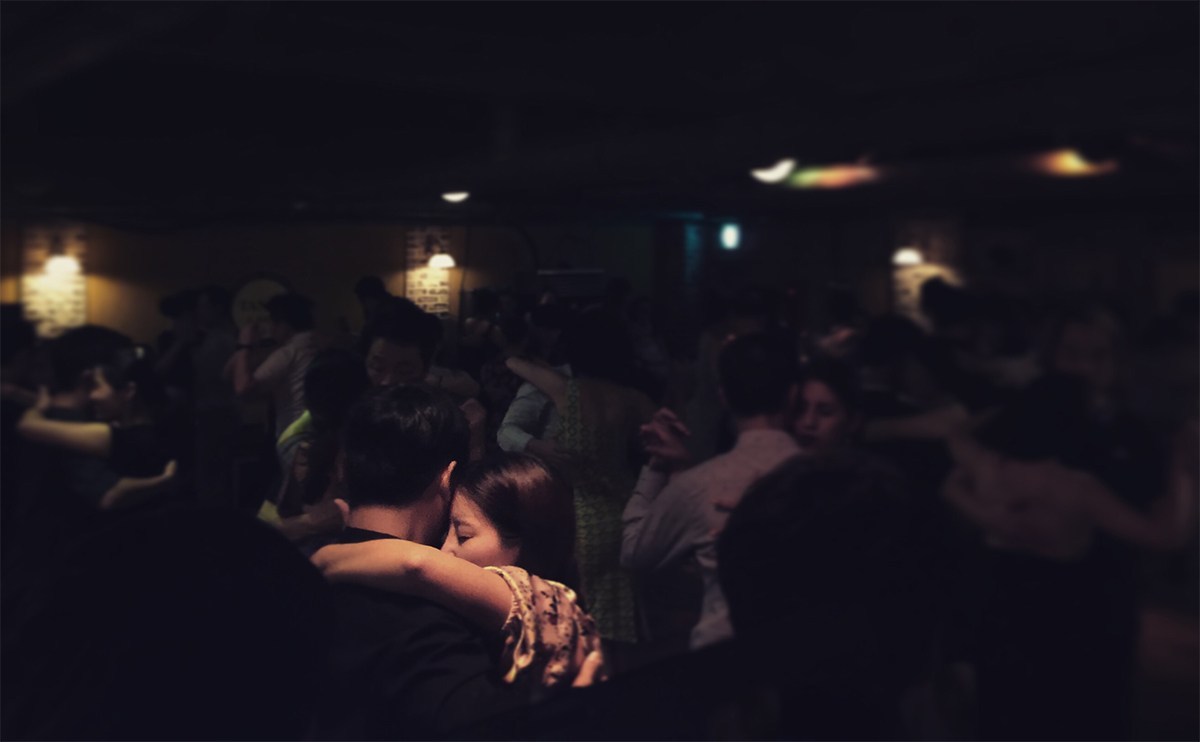Once a student asked me for help. I danced with her and gave her some advice. At the end I felt she was worrying too much about her technique, so I said,
“Technique takes time. It’s ok if you don’t do it perfectly. Don’t give yourself so much pressure. You are doing well.”
She felt so relieved she started crying.
“When I started dancing it was simple. I just enjoyed myself. Then I took more classes. Suddenly there were all these difficult things I had to do with my body. It was stressful and not fun anymore.”
I felt sad as I listened to her. I wanted to help.
“Practicing technique by yourself is great, ” I said, “but when you are dancing with somebody, don’t worry about your technique anymore. Focus on him instead. Listen to his movement and his music. He is supposed to do the same for you. That is how we connect with each other and enjoy ourselves.”
Later we encountered more women with the same struggle. Some of them cried in front of us too. It is a pity that they came to learn tango for fun, but ended up suffering. Why does this happen?
It is often said that tango is like a conversation. In a conversation, we listen to the other person even when we are talking. We check how that person is responding to what we say, and adjust our speech accordingly. Without gathering feedback, there is no conversation – we are just talking by ourselves.
Tango works the same way. When we dance we listen to our partner constantly. We feel how our partner responds to our movement, and we changes our dance in response. The difference with tango is we do not take turns. In tango both people continue to dance and listen without breaks, as if we are sharing a common stream of consciousness through dance. The moment we distract ourselves, we miscommunicate and go out of sync.
In tango classes we mostly learn things that we can see, like movement and technique. But listening is psychological and difficult to observe. When we watch two people dance, we can readily see what movements they are doing, but we do not notice how they are listening to each other with their minds.
Because listening is hard to see, it is usually not taught and learned. Some students are naturally better at it. They find it easier to move with their partner in harmony from the outset. For those who do not have this talent, they have to dance in the dark. They do not know where their partner is with respect to themselves, and the dance always feel out of sync.
Dancing in the dark erodes our confidence. When we look for security, we look in the things that we can see and control, like body technique. We want to believe if we can do all the movements by ourselves, then surely we will be able to do them with our partner too. If we are out of sync, it must be because our body control is lacking. Unfortunately, the more we focus on ourselves, the less we listen, and the more disconnected we become.
Once I saw a man in a milonga. He danced many patterns with big energy. Obviously he was very enthusiastic about dancing, but not many women wanted to accept his invitation.
Later he came to take a private class with us by chance. When Florencia danced with him, she felt he was talking by himself, and she was constantly being left behind. We said,
“When you tell your partner what you want, you need to see if she understands. Even if she understands, she may respond in a way that you do not expect. No two women dance the same; the same woman dances differently at different times. So you have to listen to your partner constantly. To her, being listened to is more important than doing patterns.”
We tried to show him what we meant by dancing and practicing with him. We were glad to see that he was beginning to understand and change.
Listening takes patience and energy. In return, we experience this magical feeling of being totally connected to someone else. The invisible dimension of tango is what makes it difficult, but it is also why I love it so much.
